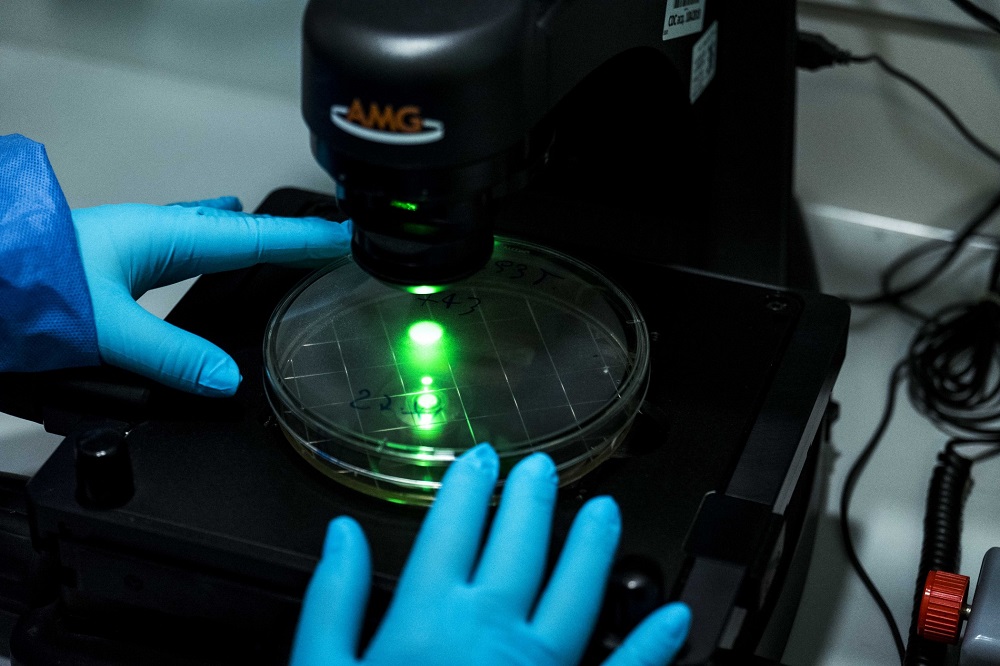It is possible to silence a desired gene by hiding it from the molecular machinery that has the task of reading it and expressing its function. This is the result of a research carried out at the San Raffaele Telethon Institute for Gene Therapy (SR-Tiget) published this week in Cell.

This technique allows, for instance, to abolish the effects of a mutated gene which results in a disease. To date the alternative has been to inactivate the gene or target its reading and expression mechanisms. These techniques however have several limitations both in terms of efficacy and safety. For this reason, the work carried out by the SR-Tiget researchers at the San Raffaele Hospital, one of 18 centers of excellence in the San Donato Hospital Group, is important; it allows gene silencing in a safer and more effective way, with applications spanning from the treatment of diseases caused by mutated genes to the modification of immune cells for cancer immunotherapy. In this study, the researchers exploit epigenetics (from the Greek prefix epi-, "who is above" the gene).
Epigenetics study the biological mechanisms by which the cell accesses written information in the genes along the DNA, thus deciding when to use them and when to leave them "silent", therefore inactivated. The group of SR-Tiget researchers led by Angelo Lombardo and Luigi Naldini synthesized artificial proteins capable of recognizing a chosen target gene, on which they add chemical changes onto it (so-called epigenetic modifications) rendering it inaccessible to reading mechanisms.
Epigenetic modifications are normally used by cells to determine which genes to use for their own activity, allowing the cells of an organism, which all have the same genetic information, to specialize in very different functions, such as in muscle, brain or even skin cells. The epigenetic modifications are transmitted to daughter cells during cell replication, a process that does not alter the original genetic information. Turning off a gene with genetic or epigenetic modifications can be compared to tearing or covering up a page from an instruction manual.
«Cells also use epigenetics to regulate their gene expression network according to the developmental stage of the organism and in response to environmental stimuli. For example, during embryonic development, epigenetics turns off those genes that are no longer needed in adult life,» explains Angelo Lombardo, «In our study we have copied the epigenetic processes which are active during embryonic development and directed them to our genes of interested, thus obtaining targeted and permanent silencing.»
Luigi Naldini comments: «This work opens new perspectives for the treatment of diseases in which the expression of a mutated gene is detrimental to the patient, the so-called dominant hereditary diseases.» However, the therapeutic implications of the new technology do not end here. Epigenetic switches could be used to turn off one or more genes involved in the regulation of the immune response, for example to make white blood cells more aggressive against tumor cells or invisible to the patient's immune system into which they are transplanted, which would otherwise attack them, causing a graft rejection. Naldini continues «Human experimentation is already underway on the use of gene silencing in cancer immunotherapy using more invasive techniques of DNA editing and may receive a further improvement by the availability of this new epigenetic technique, which is probably better tolerated and safer».
Finally, the same technology could be used to turn on genes which have been turned off during development and compensate the defect of those expressed in adult cells. Some examples include sickle cell anemia or thalassemia, in which the genes coding for hemoglobin, the protein that binds oxygen in the blood, are mutated, resulting in the disease. In these cases reactivation of the fetal hemoglobin gene may offer a new therapeutic strategy.
The first authors of the study are Angelo Amabile and Alessandro Migliara, two Ph.D. students at Vita-Salute San Raffaele University (UniSR). The coordinators of the study published in Cell* are Angelo Lombardo, a researcher at SR-Tiget and UniSR and Luigi Naldini, Director of SR-Tiget and professor at UniSR. The research was conducted by the group of Epigenetic regulation and targeted genome editing led by Angelo Lombardo, and was supported by funding from the Telethon Foundation, the European Union and the Ministry of Health.